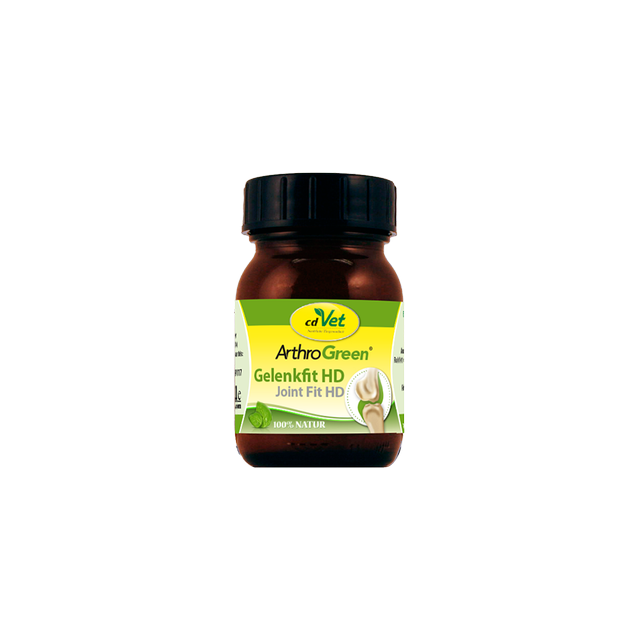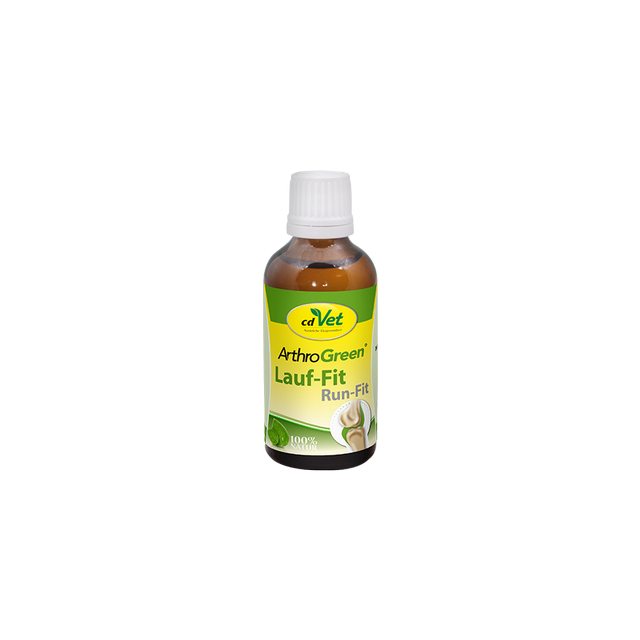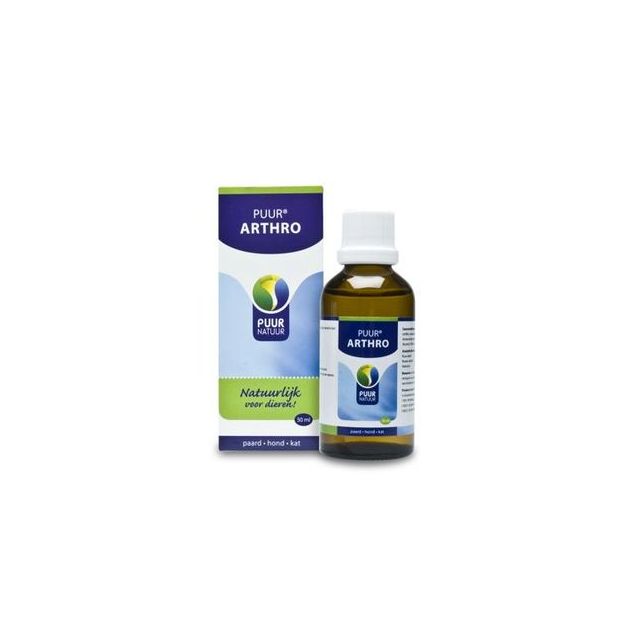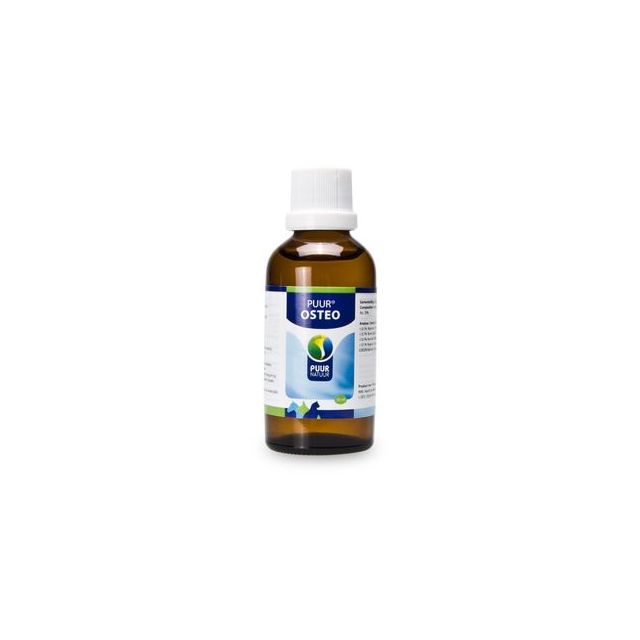Osteoarthritis in the dog
Your dog stays in its basket a bit longer, is less keen on long walks, and is very stiff, especially right after waking up. Often, these complaints are seen as "just getting old", but it could very well be a case of osteoarthritis in dogs. A bothersome and chronic joint condition that can't be cured, but fortunately, something can be done about it. Read on to find out what you can do and how Pharmacy4pets.nl can help keep your dog's joints healthy.
What is osteoarthritis?
Osteoarthritis is a degenerative joint disease, often resulting from wear and tear. It can affect all joints but is mainly found in the knees, elbows, hips, toes, and vertebrae. Osteoarthritis is a common cause of joint pain and stiffness in older dogs.
The joint of a dog with osteoarthritis
A joint sits between two bone ends. These bone ends are covered with cartilage, a soft tissue without blood vessels or nerves. Cartilage acts as a shock absorber. Inside the joint is synovial fluid. This fluid ensures proper lubrication of the cartilage during movement and nourishes the cartilage.
In osteoarthritis, cartilage damage occurs. As a result, its cushioning function becomes less effective. The composition of the synovial fluid also changes, affecting its lubricating ability. Inflammation ensues, further damaging the cartilage. Irregular bone growths appear, and the joint capsule thickens.
Which dogs get osteoarthritis?
Osteoarthritis is most common in older, larger breed dogs. However, it can occur in any dog of any age. Dogs with joint conditions like hip or elbow dysplasia or those that have had knee surgery are more prone to osteoarthritis.
Causes of osteoarthritis in dogs
Osteoarthritis can simply be a form of wear and tear, primarily related to the dog's age. However, it's a multifactorial process, meaning several factors can influence its onset and progression. Key factors that contribute to osteoarthritis include genetic predisposition, diet, obesity, overexertion or too little or uneven movement, existing joint disorders, and trauma.
Symptoms of osteoarthritis
The early symptoms of osteoarthritis in dogs are often mistaken for "aging". It's crucial to see a vet if you notice your dog moving less fluidly or appearing stiffer when getting out of its basket. Old age is not a disease, osteoarthritis is! If your dog has osteoarthritis, you might observe the following symptoms:
- Stiffness
- Limping, especially after lying down for a long time, sometimes improving during the walk
- Wanting to walk less frequently and for shorter durations
- Difficulty in getting up and lying down
- Struggling to jump in or out of the car
- Sitting or lying down during a walk
- Being less cheerful or even moody
- Reacting with pain when touched
- Biting or licking the joints
The pain is chronic. Only in the case of an acute intense pain from a wrong movement might your dog possibly whimper or howl. In any case, do not wait until your dog whimpers or howls to take action.
Treatment of Arthritis
Arthritis is an irreversible process that gradually worsens over time. It cannot be cured, but fortunately, the process can be slowed down and the symptoms can be treated. The earlier action is taken, the better! You can even take measures before your dog shows symptoms to help keep his joints healthy for as long as possible.
Visiting the Veterinarian
Often, pet owners delay a visit to the vet until their dog limps severely. However, it's wise to visit at the first signs of symptoms. Sometimes there's a clear cause for the complaints that can and should be treated. Additionally, the veterinarian can recommend anti-inflammatory drugs that inhibit the inflammatory process in arthritis.
Painkillers
Dogs with arthritis benefit greatly from painkillers. Because they feel less pain, they move more and their joints remain more flexible. Painkillers used for arthritis also inhibit inflammation in the joint, which slows down the arthritis process. Some dogs receive daily painkillers, others only when they experience a flare-up of pain or inflammation.
A Healthy Weight
Many dogs with arthritis are overweight. It's a pity! Because the heavier your dog is, the more its joints are strained. So, keep your dog trim. If your dog is overweight? A dietary food like Sanimed Weight Reduction can help him achieve a healthier weight.
Exercise
Dogs with arthritis also need adequate exercise; this helps to keep the joints as flexible as possible. Linear movement, for example, walking on a leash (or calmly beside a bike) on a smooth surface is safer for the joints than jumping for a ball or playing with other dogs. It's better to take shorter walks more frequently than one long walk once a day.
If your dog enjoys swimming, it's also a great way for him to exercise his muscles without putting strain on them.
Physiotherapy
Physiotherapy can help improve mobility and reduce pain in dogs with arthritis. A qualified animal physiotherapist can guide you in choosing the right exercises and therapies for your dog.
Food and Dietary Supplements
Your dog's bones and joints can be well-supported from the inside with a specific dietary supplement or food.
The omega-3 fatty acids EPA and DHA from fish oil are known for their 'lubricating' effect on joints and their anti-inflammatory effect. You can add fish oil as a supplement to the food, like Doils Joint or Seraquin Omega Dog 60 tablets. There's also specialized joint-supporting dietary food, one of its main features being a high content of EPA and DHA, for example, Sanimed Osteoarthritis Dog.
Supplements based on undenatured collagen like Flexadin Advanced or salix and harpagophytum like Iso-Joint +Acute can excellently support your dog's joints and help him keep moving as smoothly as possible.
Although arthritis is a chronic condition and will not heal, something can definitely be done about it. The emphasis is on improving your dog's quality of life and reducing pain and discomfort. By combining the aforementioned approaches, you can help your dog cope with arthritis and provide him with a comfortable life.
If you have a question about our products or about arthritis in your dog, please contact us.




